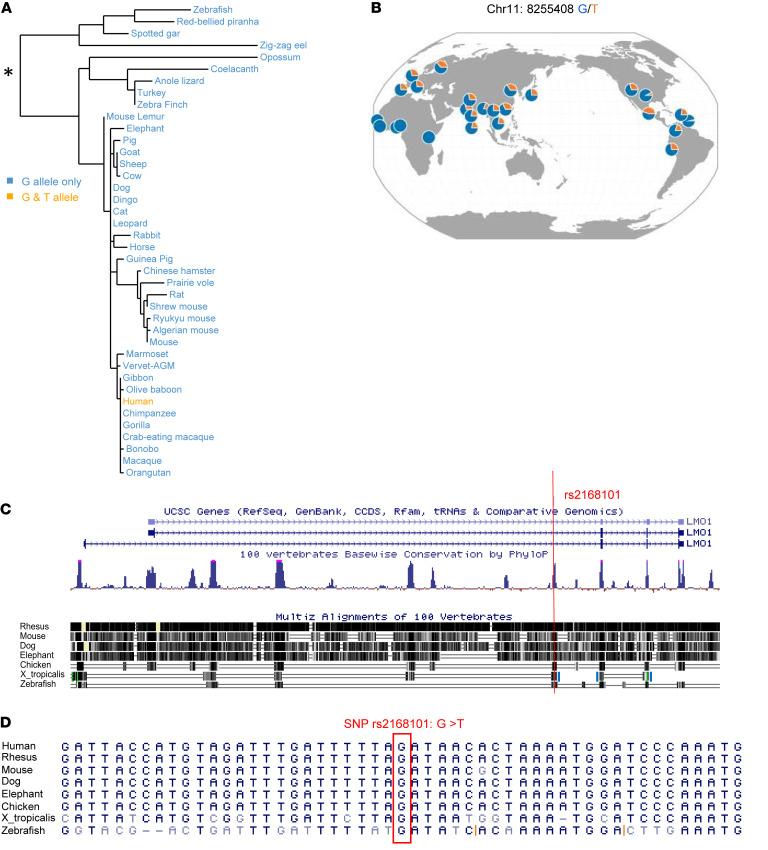Figure 1
(A) Phylogenetic tree representing the evolutionary relationship between the LMO1 genes from the indicated species over the last 400 million years. Blue font denotes species that exclusively harbor a G at rs2168101. Orange font denotes that only humans demonstrate a G/T polymorphism at the rs2168101 locus. (B) Distribution of the G and T alleles of rs2168101 across Human Genome Diversity Project (HGDP) populations, as illustrated by their genome browser (http://popgen.uchicago.edu/ggv/). Circles create a pie chart in which blue represents the proportion of human populations from different parts of the world with a G at rs2168101 (human chromosome 11, position 8255408), and orange represents the proportion with a T. (C) Shown is a modified UCSC Genome Browser (https://genome.ucsc.edu/) window of the human LMO1 locus indicating the 2 alternative transcription start sites and the position of rs2168101 in the first intron (top), a vertebrate conservation track graphing PhyloP conservation scores (middle), and Multiz alignments of multiple vertebrate species (bottom), illustrating a high level of conservation in the noncoding region surrounding rs2168101. (D) The immediate sequence neighborhood surrounding rs2168101 in the first intron of LMO1 from multiple species is shown. The G at rs2168101 in the human consensus sequence is marked with a red box.

